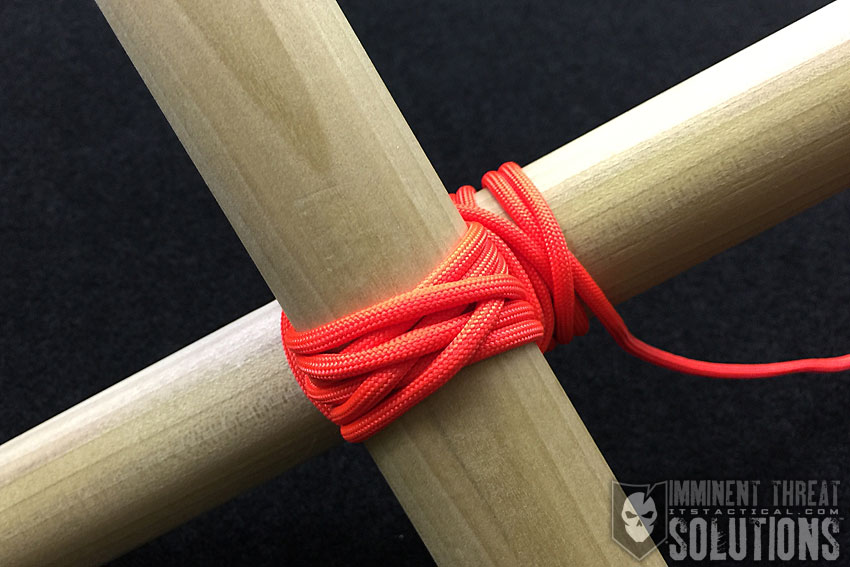
When building structures and using lashings, the Diagonal Lashing a worthwhile addition to your toolbox. As spars cross on diagonal angles from 90˚ to 45˚, utilize this variation to increase the stability.
As you’ll see in the video below, a Timber Hitch is used to start the Diagonal Lashing to pull the spars together before beginning the wrapping and frapping. I like to reserve the Diagonal Lashing for areas in a structure that are used for support, such as diagonals supporting a square structure. It’s also a good rule of thumb to only use the Diagonal Lashing on areas like these where the spars don’t touch.
If a Square Lashing was used for this purpose, to bring spars that don’t touch together, it could cause unnecessary bowing of the cross pole. This puts additional strain on other areas of the structure and can cause failure in those areas.
As shown in the photo above, I’ve used paracord and dowel rod for demonstration, but this should never be used on weight bearing structures. It will slip too easily. Boy Scouts utilize lashings on their intricate and massive pioneering projects and commonly use cedar spars. The combination of cedar and natural fiber rope, really bites well and create lasting structures capable of supporting weight well.
Diagonal Lashing » Lashings
(Strength: 5/Secure: 5/Stability: 3/Difficulty: 3) See below for what these ratings mean.
Ratings
Strength/Security/Stability/Difficulty
Each knot will be assigned a rating from 1-5 (1 representing the lowest score) based on the following four properties:
Strength – All knots will weaken the strength of a rope, however, there are knots that are stronger than others. The scale here will reflect how strong the rope remains with the specified knot.
Security – The security scale refers to how well the knot will stay tied, and resist coming loose under a normal load.
Stability – Stability refers to how easily the knot will come untied under an abnormal load (i.e. the knot being pulled in a direction it was not intended to) A lower score here represents instability.
Difficulty – The lower the number, the easier a knot is to tie.